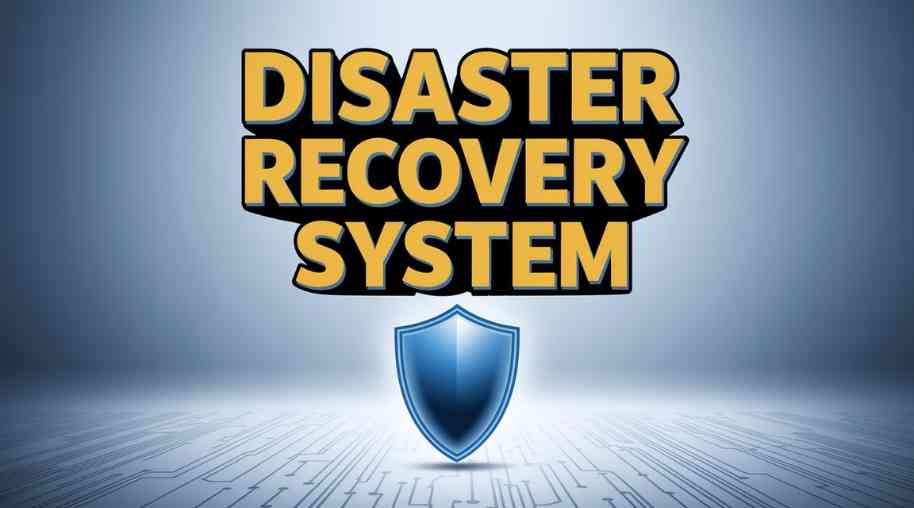DRS Full Form - Disaster Recovery System
by Shashi Gaherwar
0 1087
Comprehensive Guide to Disaster Recovery Systems: Strategies & Best Practices
Introduction
In today’s digital era, businesses heavily rely on data and IT infrastructure for daily operations. A disaster—whether natural, cyberattack, or hardware failure—can significantly disrupt these operations, leading to financial loss and reputational damage. A Disaster Recovery System (DRS) helps organizations prepare for and recover from such disruptions efficiently. This article explores disaster recovery systems, their components, strategies, and best practices for effective implementation.

What is a Disaster Recovery System?
A Disaster Recovery System is a set of tools, policies, and procedures designed to restore and maintain critical IT functions in the event of a disaster. The primary goal is to minimize downtime and data loss while ensuring business continuity. Disaster recovery systems typically include data backups, failover mechanisms, and cybersecurity measures to protect against potential threats.
Types of Disasters That Require Recovery Systems
Organizations face various types of disasters, including:
• Natural Disasters: Earthquakes, floods, hurricanes, fires.
• Cybersecurity Threats: Ransomware attacks, malware infections, data breaches.
• Hardware Failures: Server crashes, hard drive failures, power outages.
• Human Errors: Accidental deletion of data, misconfigurations, software corruption.
A well-structured disaster recovery plan addresses all these threats and provides a clear course of action in case of an incident.
Key Components of a Disaster Recovery System
1. Data Backup and Restoration:
a. Regular backups ensure that critical data is available for recovery in case of loss.
b. Backup methods include full, incremental, and differential backups.
c. Cloud-based backup solutions offer off-site storage and easy access.
2. Disaster Recovery Planning (DRP):
a. A documented strategy outlining procedures for disaster response and recovery.
b. Identifies roles and responsibilities within the organization.
c. Includes recovery objectives like Recovery Time Objective (RTO) and Recovery Point Objective (RPO).
3. Redundancy and Failover Solutions:
a. High-availability systems that automatically switch to a backup system when a failure occurs.
b. Load balancing and clustering ensure minimal service disruption.
4. Cybersecurity Measures:
a. Firewalls, antivirus software, and intrusion detection systems (IDS) protect against cyber threats.
b. Encryption ensures sensitive data remains secure.
c. Multi-factor authentication (MFA) reduces unauthorized access risks.
5. Testing and Monitoring:
a. Regular testing of the disaster recovery plan ensures effectiveness.
b. Automated monitoring tools detect vulnerabilities and potential threats.
c. Periodic audits help improve recovery strategies.
Disaster Recovery Strategies
Businesses implement different disaster recovery strategies based on their needs, including:
1. Backup and Restore:
a. Regularly backing up data to local or cloud storage.
b. Suitable for small businesses with limited IT infrastructure.
2. Cold Site, Warm Site, and Hot Site:
a. Cold Site: A backup location with minimal infrastructure, requiring setup time before use.
b. Warm Site: A partially equipped location with some operational capabilities.
c. Hot Site: A fully operational backup site that ensures instant recovery.
3. Cloud Disaster Recovery:
a. Cloud-based solutions allow businesses to store and recover data remotely.
b. Reduces costs compared to maintaining physical backup infrastructure.
4. Virtualization-Based Recovery:
a. Uses virtual machines (VMs) to replicate IT environments for quick recovery.
b. Ensures minimal downtime and seamless operations.
5. Disaster Recovery as a Service (DRaaS):
a. Third-party providers offer disaster recovery solutions as a service.
b. Helps organizations avoid upfront investment in backup infrastructure.
Best Practices for Implementing a Disaster Recovery System
1. Conduct a Risk Assessment: Identify potential threats and vulnerabilities.
2. Define Clear RTO and RPO Goals: Set recovery objectives based on business needs.
3. Implement Redundant Systems: Ensure failover mechanisms for critical applications.
4. Regularly Update and Test the Plan: Frequent testing improves recovery efficiency.
5. Train Employees on Disaster Recovery Protocols: Educate staff on procedures to follow during a crisis.
6. Use Automation Tools: AI-driven monitoring enhances threat detection and recovery.
7. Ensure Compliance with Industry Regulations: Follow legal requirements for data protection and security.
A robust Disaster Recovery System is essential for any organization to safeguard operations against unexpected disruptions. Implementing a comprehensive recovery plan with data backups, cybersecurity measures, failover strategies, and cloud-based solutions ensures business continuity and resilience. By staying proactive and continuously improving disaster recovery strategies, businesses can mitigate risks and minimize downtime effectively.

Share:








Comments
Waiting for your comments